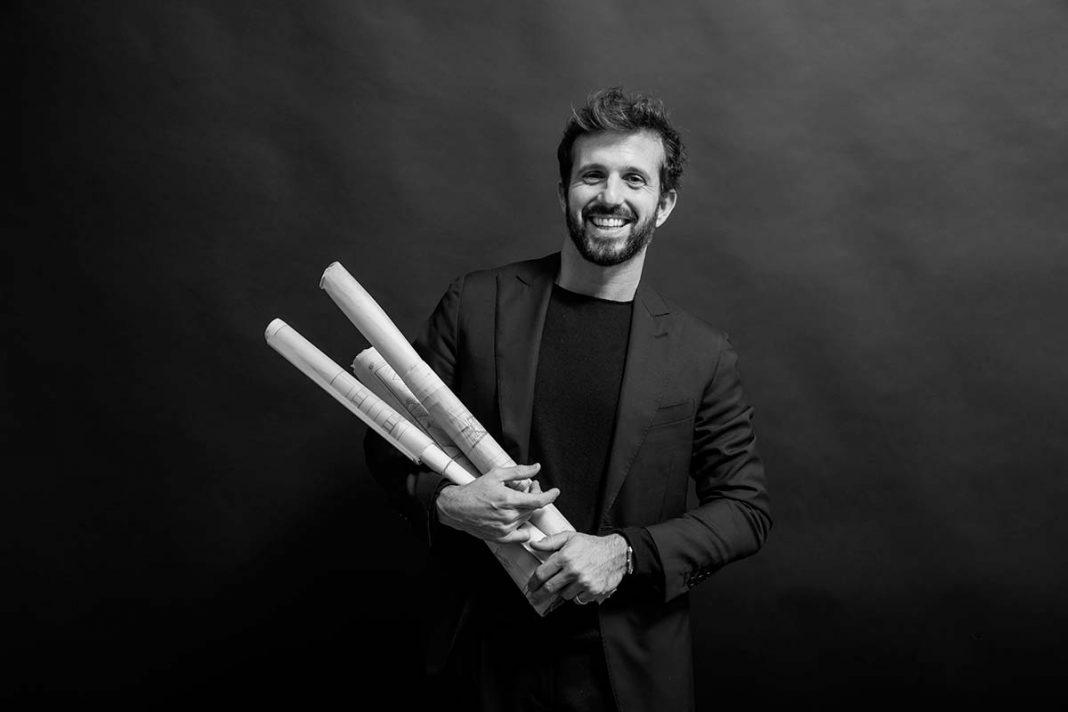Zuccon International Project is a “family affair” Martina and Bernardo Zuccon grew up together with the firm founded in 1972 by their parents, the architect Gianni Zuccon and his wife and colleague, Paola Galeazzi. Their vision was to build a multidisciplinary firm (from architecture to industrial design), which successfully entered the yachting world after only a few years, thanks to the collaboration with Cantieri Posillipo first, and with the Baglietto shipyard after.
They have tasted challenges and successes, they have embraced that deep passion for the sea and boating that led the ZIP studio (as it has been nicknamed) to become a privileged interlocutor for the major shipyards (such as the Cantiere Navale Ferretti and CRN of Ancona). A few years and dozens of models later, they took the helm and broadened their horizons and prospects. The thriving partnership with Sanlorenzo Yacht started under the leadership of the second generation, which brought about unexpected results, such as SL96A, SD 96, SX76 and BG42, BG62, BG70 and the brand new BGX60 for the Bluegame brand. The latest achievements of this collaboration are 44Alloy made of aluminium and SX112, presented exclusively during the 60th Genoa Boat Show.
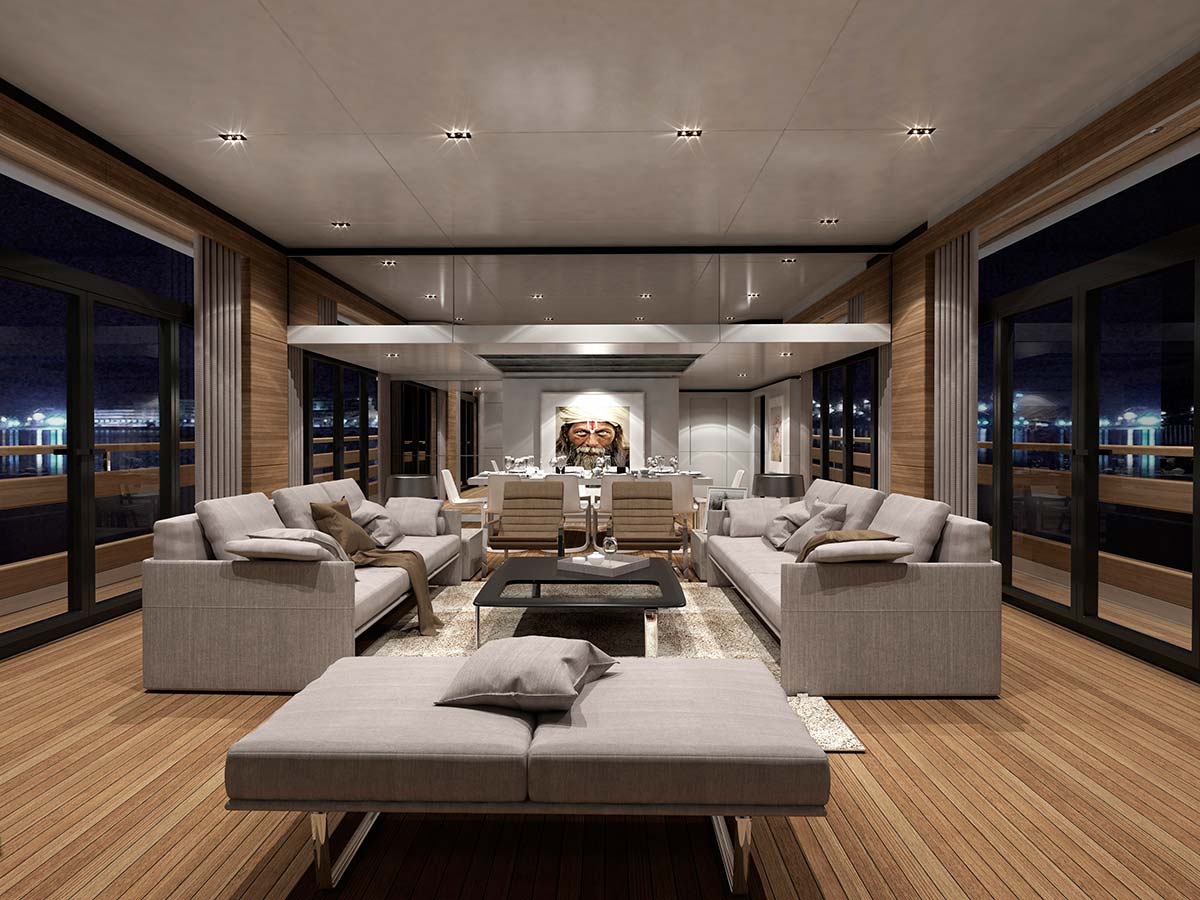
PY Heritage 45m by Picchiotti Yachts
You are the second generation at the helm of the Firm. What does the world of boating represent to you?
True, it was my parents who founded Zuccon International Project in the late 1970s. Within the walls of our house you could breathe the scent of the sea and of boats every day. There were boating magazines everywhere and in the summer we went to our grandparents’ house by the sea, where I spent every afternoon on the docks of the port studying the boats, analysing every detail, learning from an early age to distinguish the shipyards, types and architects who had designed them. And when I stood in front of yachts designed by my parents, which often happened, I felt really proud, and this fostered the desire to be able, one day, to follow in those fascinating footsteps myself. So, to answer your question, the nautical world is my home.
Would you define the boating sector as conservative or open to change?
Compared to other sectors, nautical design is still burdened with the weight of tradition, probably even more so today; we are talking about a conservative sector where the concept of innovation has too often assumed a meaning devoid of real substance. Today’s yachts, or at least those that best respond to the market, are very similar to those of half a century ago: it is no coincidence that the vintage fashion is very popular, recovering or referencing to images of historic boats. The formal experiments that should look to the future too often remain ideas on paper that are not reflected in the current market, which fears the financial crisis and is hostile to change. Our duty today as designers? Making significant investments in research to provide new scenarios and stimuli, always remaining true to tradition, but morally obliged to renew and innovate in order to keep the engine of change running. Today’s technological innovation allows us to tread paths that were previously unthinkable, with an eye which is now dutifully attentive to the needs of a design that is as ‘sustainable’ as possible.
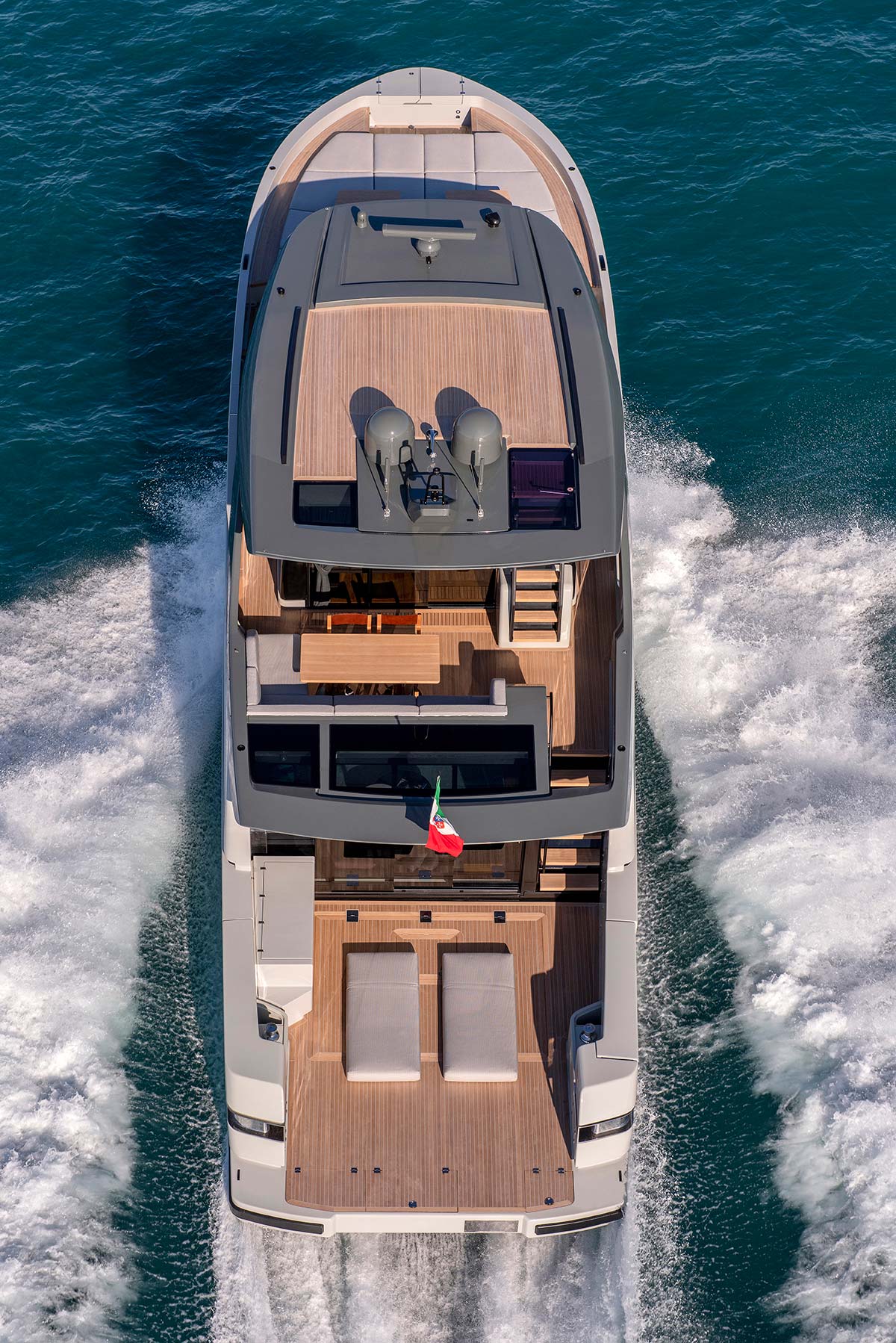
BGX70 by Bluegame
There is now talk of green and sustainability in all sectors: how is it applied in the boating world?
The boating industry has been investigating eco-sustainability issues for at least 15 years, but the problem has always been to find technologies that would allow the implementation of the different solutions. There is no doubt that a huge step forward has been made in recent years in terms of propulsion: hybrid or electric motors are now a reality and shipyards are constantly working to offer yachts with increasingly eco-compatible propulsion systems. Yet, although shipyards are willing to invest in this sector, there is still a need to educate owners who are fundamentally conservative. In fact, when given the choice, the owner almost always prefers a non-sustainable propulsion system.
Yachts and super-yachts have become all-round residential projects. How have the living environments inside them changed?
There is much talk about home design linked to boating, but be careful not to lose sight of the”functional aspect” of the object: the navigability and the comfort at sea are just some aspects that make our work, that of the “designers of the sea”, different from that of our colleagues who work on ground projects”. Just think of the interior design: the boat is not a static structure and clearly its interiors must adapt to these movements so as not to compromise the functionality of some of its spaces.
Whether it is a yacht or super-yacht, I like to interpret each project as a container of life that chooses not to change in its spaces and functions, but which simply transforms to adapt to different dimensions and ergonomics while retaining the functional and distributive principles without forcing those who will live in the boat to accept compromises.
Instead, how has the relationship with the external side transformed (I am thinking of innovative projects such as SX112 and SL96 Asymmetric by Sanlorenzo)?
SL96 Asymmetric is the second asymmetrical model built by the Sanlorenzo brand: the asymmetry has made it possible to rewrite the conventional harmony on board, offering not only volumes so far intended for other functions, but above all creating new life scenarios, new perspectives capable of enhancing and promoting that visceral visual, physical and emotional bond that exists between man and the sea. On-board flows that change and offer new opportunities to exploit spaces in everyday life. A typological research aimed at identifying new potential ways of experiencing the sea that the firm has been carrying out over the years, which further validates our work with SX112.
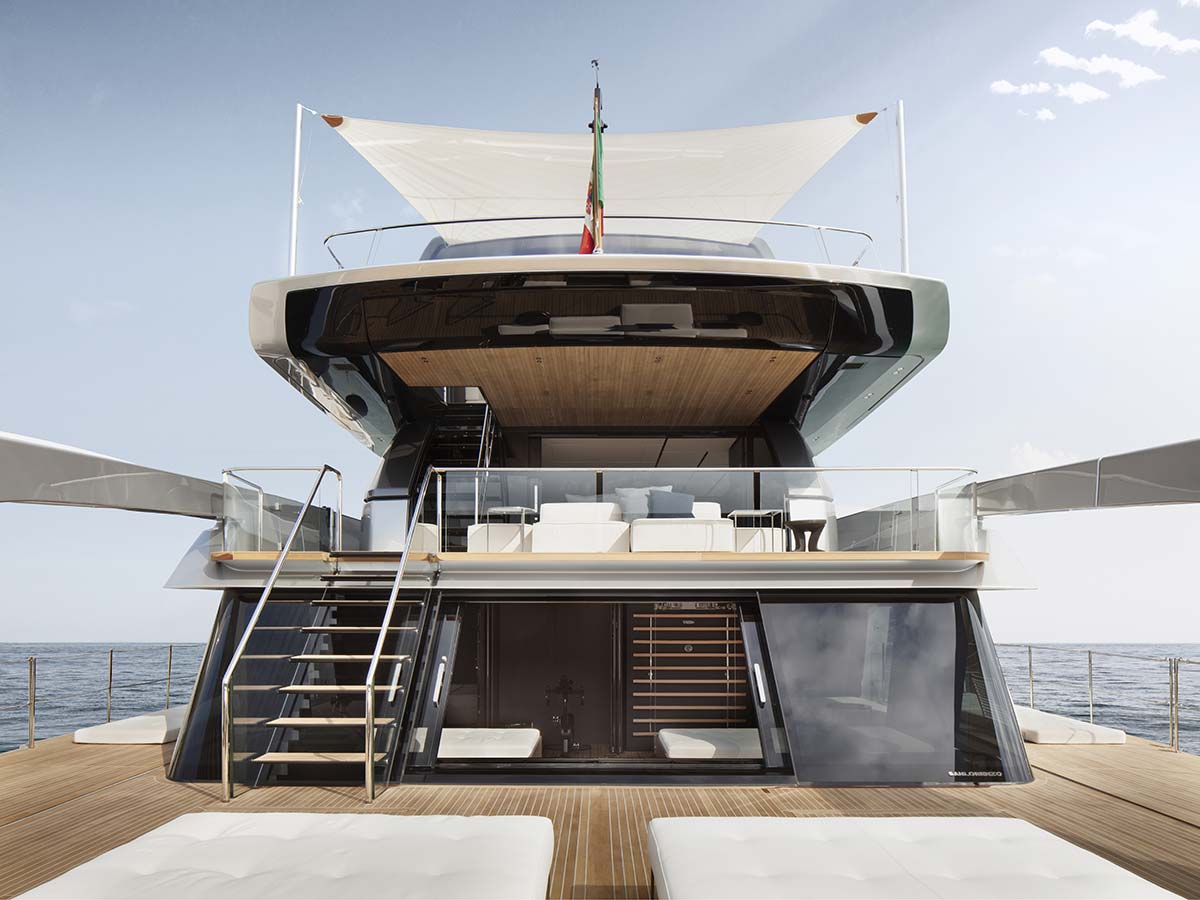
SX112 by Sanlorenzo
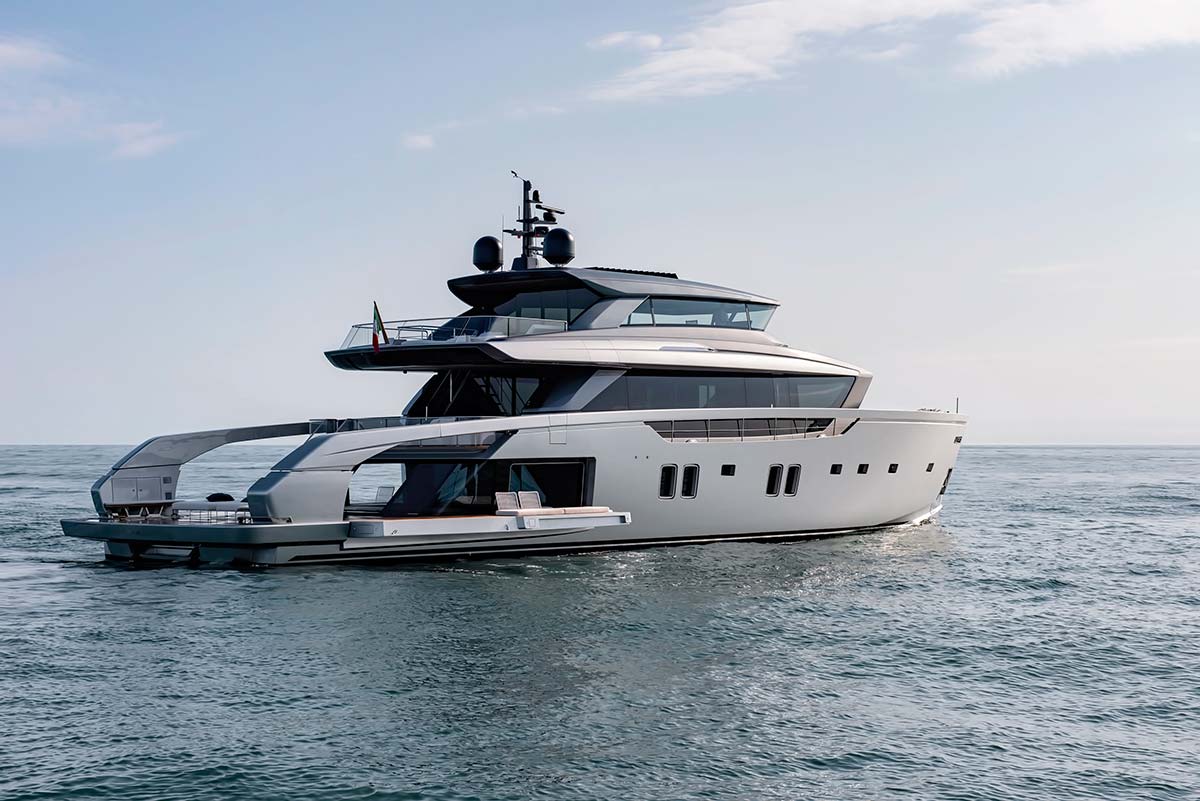
SX112 by Sanlorenzo
On board the new SX112 the barriers “fall” and the boat opens to the sea through a simple and direct interpretation, where everything enters into a relationship with the marine context. This project aims to combine the “must have” that the market requires even on smaller boats with a transversal and innovative living solution that changes traditional distribution balances.
You often find yourself in the middle, between the owners and accomplished interior designers: is it all a matter of balance?
Working with prominent designers belonging to sectors other than the boating one is definitely an experience that enriches us mutually. Different approaches, completely opposite points of view, ideas, opinions, can only give an added value to the project. At the same time, sharing and reworking the shipowners’ requests is probably the most interesting part of our job. Regardless of the appreciation that can derive from a visit aboard by a journalist or a client, it feels good to know that the boat was purchased by a person who has chosen to navigate and live according to the parameters that I have personally defined, and that the client embraced.

